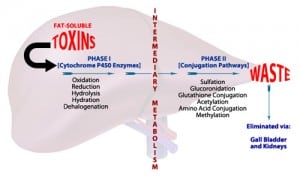Bacteria are some of the most intriguing little buggers. Some can wreck havoc on our system while others are living within our human body performing tasks that are essential to our health. Some of these healthy bacterias are also what is responsible for the process of milk fermentation. The process that transforms milk into a creamier texture we know as yogurt.
There is evidence that suggests milk fermentation occurred as early as 2000BC in the Indo-Iranian culture. Yogurt was not only used as a food source but has historically been used as soap.
Today however, natural occurring bacteria in milk are killed off during the process of pasteurization. A process introduced to increase shelf life as well as reduce potential pathogenic microbial contamination. Advances in research have brought to light that some of the bacterial cultures in milk have numerous benefits on our health. Today we must introduce microbial culture into pasteurized milk in order for the transformation to occur.
What are probiotics?
“Live microorganisms which when administered in adequate amounts confer a health benefit on the host.” –World Health Organization
Do all yogurts have probiotics?
Some yogurts have been heat treated to increase shelf life. Most probiotics are heat-sensitive and destroyed by the process.
Some yogurts labeled with live or active bacterial culture have not been heat-treated and do contain live and functional bacteria. What we don’t know is the amount of bacteria being consumed and which strain being consumed. Since we do not know the strain being consumed we are not really sure how much of them are resistant to gastric acid, or bile acids or which specific health benefit they confer. This leads to a lot of unknown variability between yogurts.
The popular yogurt Activia by Danone has gone one step further. In addition to the general lactic acid bacterial culture used to make yogurt it has also introduced an exclusive probiotic strain- Bifidobacterium (animalis) lactis DN 173 010. This is the only commercial probiotic yogurt that has and continues to assess the health benefit of this specific strain of probiotic in human trials. They have done preliminary research in people affected with irritable bowel syndrome and several studies on its impact on stool transit time. It has also been studied for viability; we know this strain survives the environment of the stomach and bile acids.
So which yogurt should you eat?
Well that is a complex question! If you have irregularity issues perhaps activia is a good choice for you. Despite the research behind their product it is more processed than other yogurts.
Personally, I prefer foods with the least amount of processing or number of ingredients and additives. For general health, a plain yogurt with active bacterial culture would be a wise choice. You can always add your own fresh fruit at home.
With the advent of pasteurization came the decline of probiotics in our food sources. For general health and wellbeing yogurts provide many beneficial nutritional components if tolerated well and may provide to some extend probiotics in our diet.
Reference:
Bifidobacterium from fermented milks: Survival during gastric transit
Recent advances in the use of functional foods: effects of the commercial fermented milk with Bifidobacterium animalis strain DN-173 010 and yoghurt strains on gut transit time in the elderly.

